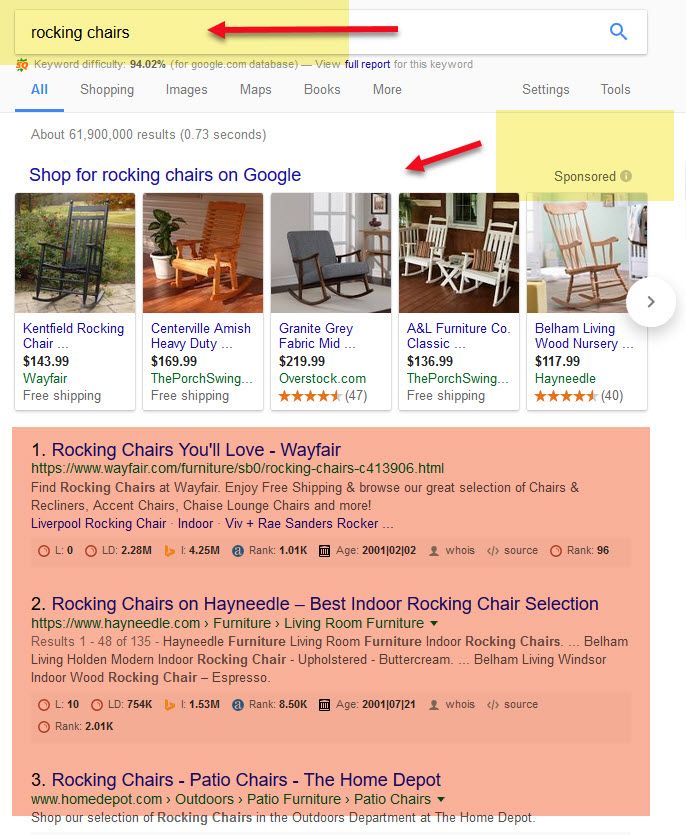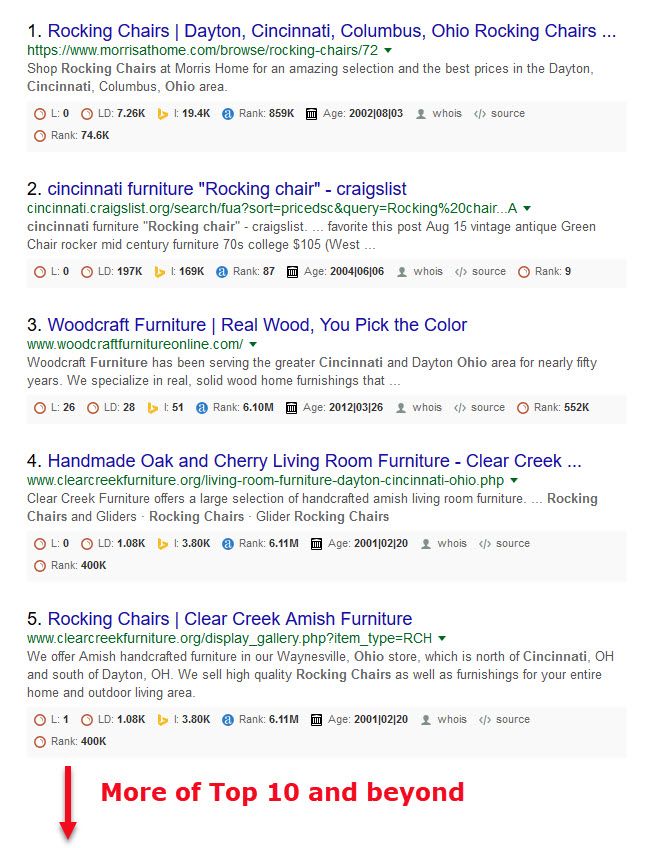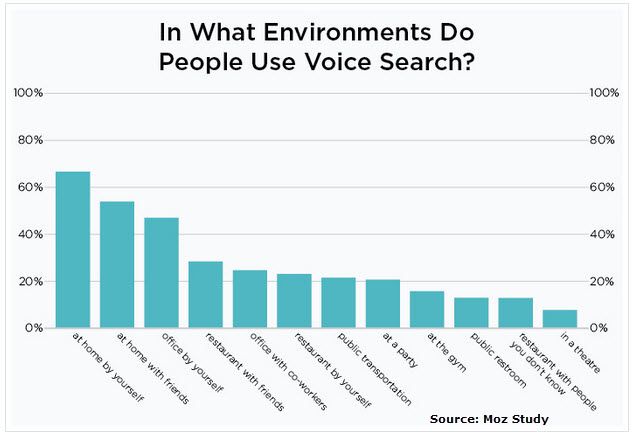Local Business Search Engine Optimization
Local SEO Perspective for Small and Mid-size local companies
We will be exploring the impact of local SEO strategies and how they can impact a business’s online digital marketing. Covering the important areas of SEO optimization, content marketing, and strategies and techniques for SEO.
Service topics include:
Local SEO services for website design, optimization, social media, and content creation. Covering key topics, trends, and strategies, Helping businesses improve visibility and ranking in search results.
- Understanding SEO and its Impact on Local Businesses
- How to optimize content for SEO
- The use of optimized SEO content and how it affects local competition.
- Techniques and strategies for optimizing local content.
- The power of artificial intelligence to positively impact local SEO.
In order to understand the importance of local SEO techniques for ranking the website content for local businesses, it is first necessary to understand “SEO” more broadly. According to a definition from Webopedia.com…
Search engine optimization is a methodology of strategies, techniques and tactics used to increase the amount of visitors to a website by obtaining a high-ranking placement in the search results page of a search engine (SERP) — including Google, Bing, Yahoo and other search engines. Read more >>here
The abbreviation SEO stands for “Search Engine Optimization”. The “SE” refers to search engines, which describe Google, Bing, Yahoo, and a number of others that are designed to allow us to search the web using these search engines on our browsers. We all have signed up for one or more of these in order to use the Internet. The significance of a business website is to endeavor to have our site’s content show up when someone searches for our company or the products and services being promoted by our company.
Global SEO for Search
The amount of traffic that our business website gets will depend on two primary things.
- Paid Traffic – advertising our company on the search engines such as Google Adwords. Here a page on our company, usually advertising or promoting a product or service, will show on the first page of a potential customer’s search to the extent our ad budget lasts in competition with others bidding to be shown for a specific search term.
- Organic Traffic – whereby our site’s page is ranked high enough, against all others for the same search term, to garner some share of the traffic that may “click-through” to our website. The importance or organic traffic is that it is “FREE” traffic.
Let’s take a look at an example. Suppose your company is in the rocking chair business. Here is what happens when someone uses their search engine to search for “rocking chairs” with no specific geographic targeting.

Here we see at the top the search term “rocking chairs” entered. The search engine opens to page 1 of the search and shows;
- Paid or “Sponsored” Ads at the top with images highlighted in Yellow.
- Organic website pages showing the top 10 ranked sites for that term are highlighted in Red. This is the Free organic traffic described above.
The website pages shown are those that this particular search engine “ranks” above all others. Those on the first page are ranked from #1 to #10 as being the “best” information related to the search term “rocking chair”. There are as many as 36 other pages showing say the top 360 ranked sites in order of ranking.
Site Traffic based on Pager Rank
It is significant to understand that the top 10 ranked sites will get approximately 90% of all the search traffic. The objective for organic search is to have your business earn a top 10 ranking for your important pages and that is where SEO comes into play. Here is a chart based on research published on searchenginewatch.com showing a study by Chitka of traffic by Page Rank.
| Page Rank | % of Traffic |
| 1 | 28.5% |
| 2 | 15.0% |
| 3 | 11..0% |
| 4 | 8.1% |
| 5 | 7.0% |
| 6 | 5.0% |
| 7 | 4.0% |
| 8 | 3.0% |
| 9 | 2.0% |
| 10 | 2.0% |
Note; These are the estimated traffic from an AI search in 2024
At present, the average monthly search volume for the term “rocking chairs” is 90,500 in the USA alone and you could expect to pay $1.10 per click to your website if you were using paid advertising. If you were the number 1 ranked website for that term, you could expect to get about 33% of that traffic or 29,965 people to click through to your website. While the #10 organically ranked site would get about 2,172 clicks.
Techniques and Strategies for SEO Results
There are a myriad of tools, techniques, and strategies for implementing state-of-the-art SEO but for the purpose of this Local SEO Guide, we will cover the 10 most important.
- Optimize your website for Mobile search
- Implement targeted “link building” from authority websites to your website
- Focus on “voice search” text and long-tail keywords in your content
- Provide comprehensive answers in your content surrounding the intent of the search term targeted
- The “URL” of each website Page, referred to as the permalink, should be as short as possible
- Optimize your pages for “local search terms” (more on this later)
- Website design generally and Page design specifically should provide user-friendly navigation and function
- Implement keyword context in your articles and posts that support the target search term with long-tail phrases
- The content length of your articles, particularly a main article called a “cornerstone” post should be over 2,000 words.
- Make site speed, the time it takes for a website & its pages to load must be optimized (coding/software). This is particularly true due to mobile phone searches.
Local SEO v. Global SEO for Website Traffic and Ranking
The information above describes the broad SEO process as it relates to more global search. This guide for local SEO is designed to help small companies understand how to make SEO work for them in their local geographic markets.
Our position at M4 Digital Marketing is that small and mid-size local companies are in the ideal position to compete and grow by implementing “local SEO” strategies, tools, and techniques.
The tremendous growth of customers searching for products and services, locally in their own geographic areas, online, and dramatically on mobile devices such as smartphones, is undeniable. The primary target for local SEO is to allow businesses to stand out in digital search against their competition.
Whether it is organic search traffic or paid advertising, particularly on social media such as Facebook ads, local companies can significantly boost their business growth with local digital marketing SEO techniques. The opposite is also true. Failure to implement local SEO is a road to falling behind quickly.
First, to understand how local search unfolds, let’s look at a local search example for our same term “rocking chairs” to get a real view of the difference with global search. Here we searched in our city, Cincinnati, for “rocking chairs.”

The difference here is striking compared to the global search, without reference to a geographic location, when you see the local search results. The first thing you see is a Map pointing out the locations of the top 3 ranked locations nearest your geographic location (where you were when you entered the search). Next, you see the “3-Pack” shown for the top 3 ranked local companies for “rocking chairs”. You can also Click “More places” to see other lower-ranked store locations below the top 3.
Then, as you scroll down you see the Top 10 ranked organic sites for the search term.

The top 10 ranked website pages for the local search term “rocking chairs Cincinnati, Ohio getting Free organic traffic.
The results are absolutely dynamic for the stores in this local geographic search, both for the stores in the Map and 3-Pack and the top 10 organically ranked sites. Imagine if you were a local store showing in the 3-Pack. The searcher can see exactly where your store is located with respect to where the are geographically!
Local SEO Factors for Search Results
The use of SEO for local business optimization is among the most important areas for leveraging digital marketing for a business marketing in a specific geographic location.
Here are two areas of local SEO search that warrant a detailed look, Voice Search and Mobile Phone Search.
Importance of Voice Search to Local SEO
Voice search is in its beginning stages but is growing rapidly and is predicted to dominate search in the future
50% of all searches will be voice searches by 2020” according to comscore
You may be amazed at how the ease of voice search is applied in the everyday activity of customers. In the following chart published by Moz, you will see the variety of locations in which people find it appropriate to use voice search.

Today, it is very likely that a number of potential customers will be using a voice search instead of typing a search term on their computer or mobile phone. This requires a local business to make sure that their website content uses search terms that reflect how people speak versus how they type when searching. People might type in our search term “rocking chairs Cincinnati, Ohio”, but they would be more inclined to describe their search verbally in a voice search as:
“Rocking chairs near me”
“Best rocking chairs near me (or location)”
What are the top-rated rocking chairs stores in (your location)”
This suggests clearly that you need to include long-tail keywords like these that reflect what people would speak when using voice search in your website content.
Mobile Phone Search
The regular use and, frankly dependence on mobile phones, now dominates our daily lives has a direct influence on local company success.
Consider this
87% of people use a search engine on their smartphone at least once a day (Source: business to community.com.)
According to searchengineland.com, over “94% of smartphone users use these devices to make a search” in order to find a store in their local location.
As a local store offering products and services to the public, being visible to someone in your general vicinity searching on a mobile phone for a store offering your products can not be overstated.
Specific Local Business SEO Factors
The use of SEO techniques for local business online ranking and traffic generation is straightforward in the basic elements. Like global SEO factors, local SEO optimization falls into Onsite and Off-site Techniques.
On-Site (on your website) include:
NAP
The first and often overlooked is the importance of having your local business “NAP” on every important Page or Post on your website. NAP stands for Name, Address & Phone #. It is absolutely necessary to establish your NAP and have it be the exact same, with no variations, on your website and on all external websites such as Directories.
Social Media Signals
Having your social media accounts and Icons on the business website is a key element of building a following. Make sure you have the clickable Icons for Likes and Following.
Geographic Proximity Descriptions
One overlooked factor is to periodically work on information about your business’s geographic location and neighborhood. By mentioning local landmarks, history, other businesses, and points of interest, the search engines can better associate you with your area neighborhood.
Website signals to the search engines such as the Page Title (Meta Title) and Description (Meta description) that are found in the HTML codes on each site Page. In addition, these signals are a function of the keywords included in the page text especially related long-tail keywords. Long-tail keywords are 3 or more word phrases that represent the primary targeted keyword but are more in the manner of what people actually search for or use when applying a voice search.
Optimizing your website About Page
Do this by including geographic descriptions of your location as well as a MAP showing you exact location for both visitors and the search engines is helpful.
Local SEO: For detailed local SEO go to https://moz.com/local-search-ranking-factors (1)
Schema Markup
Schema Markup represents a special type of coding that can be added to your website by your designer or a specialist, is a strong factor in communicating to the search engine bots (software that searches and indexes your site) exactly what your website is all about.
Off-page Local SEO
Google My Business integration
This technique starts with setting up a Google My Business (GMB) Page. Then as you go forward, you add customer reviews, store or product images, and have your GMB verified. All local businesses need to claim their Google My Business Page to verify your business and location. Simply go to Google My Business https://www.google.com/business/ Log in and complete your GMB setup.
Here is a partial list of important things to include or complete on your GMB:
- Add a long, Create a unique description, and make it long a detailed that’s formatted correctly and includes links.
- Correctly identify your local company “category” representing your business purpose.
- Include relevant images of your store, location, and products
- Add a local business address, and phone number to your listing consistent with the NAP format you set up for all listings
- Utilize listing your company in local directories such as Yelp and Yellow Pages
- Use the opportunity to include a quality (high-resolution) profile image and cover photo to the GMB.
- Specifically, state your business days and hours of operation
Citations
Defined as mentions and links from other websites,
Getting Google Reviews
A Google review is a fairly easy thing for customers, friends and family to help with are very important. Once you get 10 or more you will get more visibility on Google.
Google My Business is effectively an updated version of what used to be Google Places for Business. By integrating this into the Google Plus platform, Google has allowed companies to manage the business information that appears in maps and search all in one place. With local search results, Google will often show a series of businesses in the area in what is known as the “local pack”. It is from here that your potential customers will see things like your address, phone number and of course reviews that people have written about you. Not only do reviews help you with your click through rate but they can also help your business appear in the local pack in the first place.
The steps are straightforward:
- Search for your company by name in Google.
- Click on the button “Write a review”.
- Click on Write Google review (You’ll see a Google review box has popped up)
- Copy the URL out of the address bar.
- Send to your clients and start getting Google reviews.
10 Top Benefits of Successful Local SEO
A Small and mid-size local business must surely see the overall advantages afforded to them by implementing local SEO best practices as part of a comprehensive digital marketing plan. We would consider the top 10 benefits to be as follows:
When a local business manages to become a visible solution to any of these needs, the rewards can include:
- Receiving Online (website and mobile) targeted traffic
- Increasing the incidents of “In-store traffic” from local search
- Opportunity for online sales such as with E-commerce
- Significant increase in brand recognition and awareness
- Positive customer testimonials that can be used for more credibility
- Online requests for your location and directions to your store locations
- Using a “click-to-call” coding for your store phone number on all pages
- Website traffic generation through search ranking improvements
- Leveraging brand and customer reach on Social media
- Networking with other authorities and potential customers
- Utilizing digital marketing channels for targeted and affordable advertising
This Guide to Local SEO has focused on many of the most important factors to be considered in utilizing all forms of Digital Marketing, including local SEO strategies and techniques, to compete and grow a small and mid-size local business. Working toward implementing these actions will strengthen your company’s brand, attract more customers and grow.
[learn more caption=”Click to Learn More About Digital Marketing”] Learn more about local business digital marketing and local SEO[/learn_more]
RELATED ARTICLES OF INTEREST
Local SEO & Online Digital Marketing
The need for local digital marketing. Most small and mid-size businesses are aware of, or using some of, the electronic media to market their brand, products & services, and the concept of local SEO. Learn More
Return to our Home Page to find more resources to help your Online Digital Marketing.
REFERENCES:
(1) Wibopedia: http://www.webopedia.com/TERM/S/SEO.html
(2)Search Engine Watch: searchenginewatch.com showing a study by Chitka of traffic by Page Rank
(3) Searchenginewatch.com showing a study by Chitka of traffic by Page Rank
Image: (Description): [Source]
Graphics: Created in Canva.com
In What Environments do People Use Voice Search: Moz Study
Article Content Development and AI: Refer to Terms & Conditions, Sections 6 & 7
